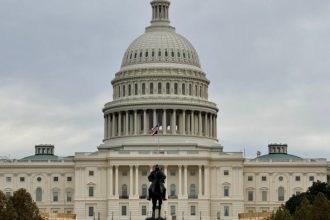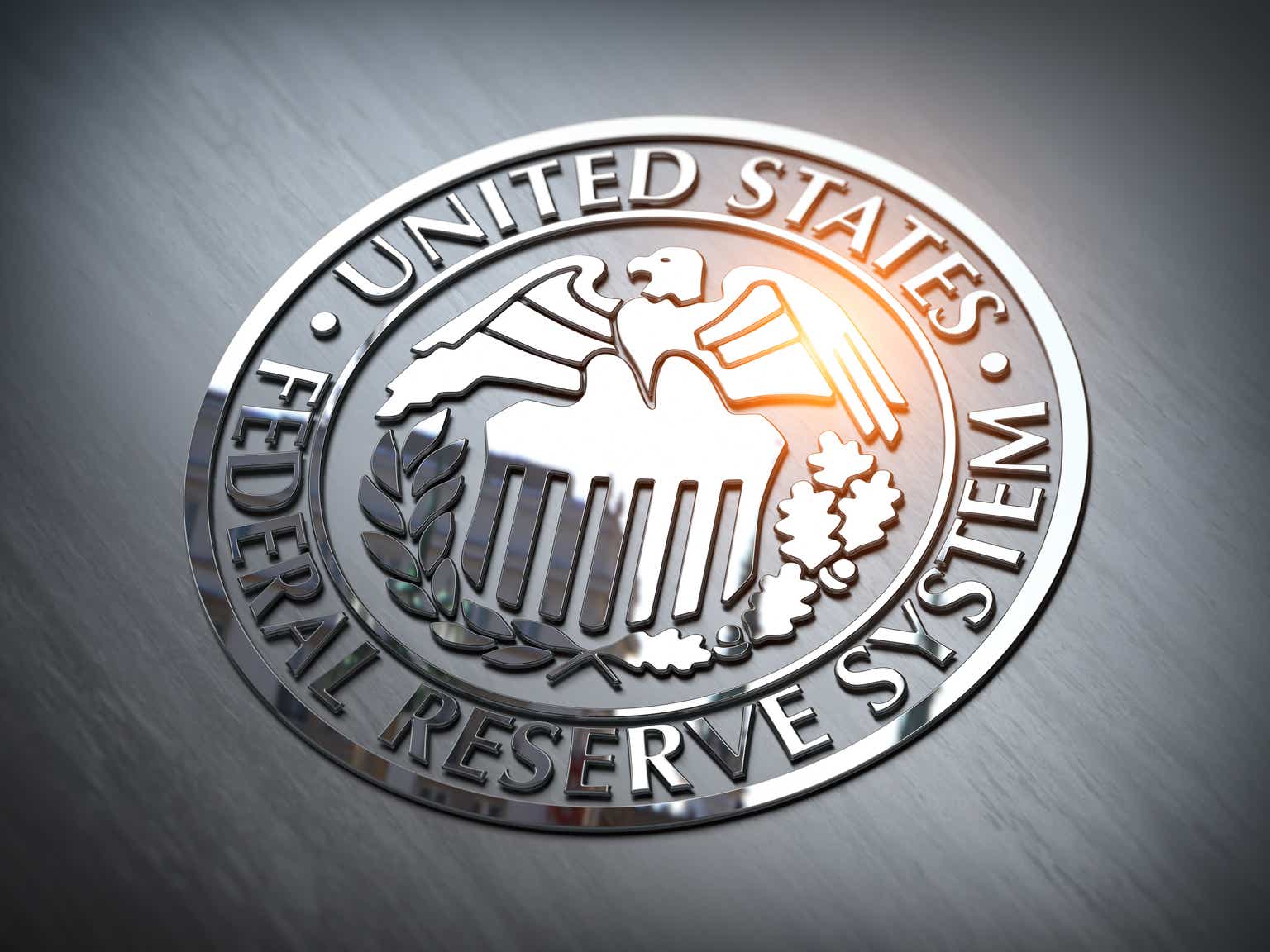Minneapolis President Neel Kashkari was interviewed by The Wall Street Journal and appeared on Fox News and Bloomberg TV last week. Neel has great credentials: he (1) ran the TARP program under former Treasury Secretary Hank Paulsen, then (2) moved to Truckee, California to write a book, then (3) ran for California Governor on the Republican ticket (a futile mission) and subsequently (4) became Minneapolis Fed President. I like Neel and am pleased that the Fed has such a positive spokesman.
In his several talks, Neel made it crystal clear that the FOMC (Federal Open Market Committee) wants to get inflation down to 2%, and he is encouraged that the core PCE (personal consumption expenditure) index has been running at just a 2.5% annual pace in the past three months. Of all the available candidates I can think of now, I think Neel Kashkari would make a great Fed Chairman when Jerome Powell retires.
The other new Fed regional bank President that is out and about on the Fed’s Public Relations tour is Chicago’s Austan Goolsbee. As the former head of President Obama’s Council of Economic Advisors, he is a very polished communicator.
In his Wall Street Journal interview on Wednesday, Goolsbee said, “The historical evidence suggests that long rates, even more than short rates, have a very substantial effect on real economic performance in a number of predictable areas … construction, investment, consumer durables.”
Goolsbee added, “If that is sustained, the Fed will have to think about the tightening impact of those credit conditions on economic performance and would there be dangers of overshooting?”
If a Democrat wins in 2024, Goolsbee would be a likely choice in 2026, or Kashkari for a Republican winner. Overall, I like both new Fed spokespersons, namely Fed Presidents Goolsbee and Kashkari, since they have made it crystal clear that the Fed does not want to overshoot by raising rates too high, thereby hindering economic growth.
Their dovish message likely helped rescue last week’s Treasury refinancing auction, when there was a ransomware attack on the Industrial and Commercial Bank of China (ICBC), which may have disrupted its Treasury market bids, according to the Financial Times.
As a result, the 30-year Treasury bond auction on Thursday did not go very well. Yields rose, but it seems that the ICBC ransomware attack disrupted buying from China, since some Treasury trades had to be rerouted.
Despite the positive views from Kashkari and Goolsbee, Fed Chairman Jerome Powell reiterated, on Thursday, that the Fed would not hesitate to raise key interest rates in December, which was another reason Treasury yields rose late last week.
However, the Fed Chairman’s comments were just his normally dour attempt to talk the market down, as I do not anticipate any further Fed rate increases, particularly since I am expecting positive inflation news this week with the Producer and Consumer Price Index releases.
The Earnings Outlook Continues to Brighten (Especially for Our Stocks)
Approximately 85% of stocks in the S&P 500 have announced third-quarter results, so far. Revenues have come in just 0.7% better than analysts expected, but earnings have come in a whopping 7.0% better than expected.
According to The Wall Street Journal, the S&P 500 is on track to post 3.7% annual third quarter earnings growth, the strongest gain in the past five quarters.
According to FactSet, the S&P 500’s revenues are on track to rise 2.3%. The top sector is forecasted to be consumer discretionary, which is expected to post 40.9% annual earnings growth.
Due to easier year-over-year comparisons, plus firmer crude oil and natural gas prices, the energy sector is anticipated to lead the S&P 500 sectors over the next three quarters.
The current stock market leader is Nvidia (NVDA), which will announce its third quarter results later this month. To comply with the Biden Administration’s new chip restrictions on China, Nvidia will announce new AI and graphic chips for China.
The previous chips that Nvidia designed for China were recently banned by the Biden Administration’s new export restrictions. This upcoming announcement should help boost the entire chip sector, since it will remove much of the uncertainty surrounding these new Chinese export rules.
Probably the best example of how abruptly a previously hot sector has deteriorated, is how EV sales have stalled for the Big 3 automakers, and even Tesla (TSLA).
Some of this is due to Tesla’s aggressive price cuts, which have effectively destroyed the resale value of all EVs. In fact, car dealers usually have to send used EVs to auctions immediately, since holding a used EV is problematic when prices are collapsing.
Selling an EV is problematic, since the remaining battery life is uncertain; dealers can’t know if an EV was frequently fully charged, which shortens lithium-ion battery life, so used EVs are almost as hard to sell as used cell phones.
The Wall Street Journal reported on Tuesday that Ford (F) and Hyundai (OTCPK:HYMTF) are providing $7,500 cash rebates on new EVs to fight this waning U.S. demand.
With the EV sector struggling, the Biden Administration’s pitch to onshore battery manufacturing has hit a major obstacle, as the Big 3 postpone their EV transitions.
The U.S. Economy is Slowing Down Fast
The Atlanta Fed is now forecasting only 2.1% annual GDP growth in the fourth quarter, down sharply from a preliminary estimate of +4.9% in the third quarter, according to the Commence Department. U.S. energy exports of crude oil, natural gas (LNG) and refined products are booming and now account for fully 2.0% of that 2.1% GDP growth, so if the U.S. economy grows at less than a 2% annual pace in the fourth quarter, then that means the U.S. economy is essentially in a recession, if energy exports are excluded.
So, while the Biden Administration has been willing to aid Iran and Venezuela to help them boost their energy exports, it has been openly hostile to domestic energy producers. That means it is very awkward for the Biden Administration to brag about the U.S. being energy-independent and a major energy exporter.
Saudi Arabia and Russia have both reiterated that their crude oil production cuts will continue through the end of the year. As a result, despite the fact that worldwide crude oil demand tends to drop in the winter months, crude oil prices could remain elevated.
The Energy Information Administration (EIA) has reported that the inventories of crude oil and refined products remain abnormally low. This essentially means that any flare-up in the Middle East, due to Israel’s offensive against Hamas, may cause crude oil prices to soar.
In fact, LNG prices have already surged, which is why Dorian LPG Ltd. (LPG) has performed well after announcing in the third quarter it had 90.5% revenue growth and 336% operating earnings growth!
There are three reasons why energy prices have moderated recently. First, it is abnormally warm in Europe, so fears of an LNG shortage have abated. Second, the American Petroleum Institute (API) reported last Tuesday that U.S. crude oil inventories rose by a larger than expected 11.9 million barrels in the latest week. Third, China’s economy continues to struggle, since its exports declined by 6.4% in October.
I should add that China’s imports rose 3% in October, which is their first increase in seven months, but it is still too early to proclaim that China’s economic demand will pick up in the wake of its latest stimulus measures.
Crude oil demand is typically lackluster in the winter months, but it should perk up in the spring when seasonal demand rises. Finally, natural gas and LNG prices should soon be boosted by an El Nino weather pattern, which could make the weather turn unseasonably cold in the Northeast and Europe.
Growth in China and Europe Remains Slow
China’s National Bureau of Statistics reported on Thursday that consumer prices declined 0.2% in October. In the previous two months, consumer prices in China were near zero.
Now that deflation has returned in China, the U.S. may continue to import this deflation via Chinese goods, which is one reason why EV prices are falling as battery costs decline.
I should add that China has major demographic problems as its society ages, due to its long-held one-child policy that has squelched household formation. It is very difficult to stimulate older societies, which is why Europe and Japan have grown at a much slower pace.
Germany’s industrial output has declined for four consecutive months. In September, Germany’s industrial output declined another 1.4%, led by autos, electronics and the pharmaceutical sector.
German factory orders rose just .2% in September, but August factory orders were revised lower. Germany’s exports to China are faltering and seem to be the primary reason for their decline in industrial output.
Due to Germany’s continued green push and switch to more expensive LNG, mighty Germany’s industrial base has been threatened by high electricity prices after shutting down its nuclear plants and the loss of cheap Russian natural gas.
Nearby countries – like the Czech Republic, Hungary, Poland and Slovakia – have cheaper electricity than Germany due to the fact they have more coal, hydro or nuclear power plants.
Manufacturing always migrates to where electricity is cheap, so more German manufacturing may be outsourced to neighboring countries in Eastern Europe. In trying to keep home factories active, German Chancellor Olaf Scholz proposed a $12.8 billion package to ease electricity costs for manufacturers.
Navellier & Associates, owns Dorian LPG Ltd. (LPG), Nvidia Corp. (NVDA), and Ford Motor Company (F) in managed accounts. A few accounts own Tesla (TSLA), per client request in managed accounts we do not own General Motors (GM). Louis Navellier and his family personally own Dorian LPG Ltd. (LPG), and Nvidia Corp. (NVDA), via a Navellier managed account, and Nvidia Corp. (NVDA), in a personal account. He does not own General Motors (GM), Ford Motor Company (F) or Tesla (TSLA).
All content above represents the opinion of Louis Navellier of Navellier & Associates, Inc.
Disclaimer: Please click here for important disclosures located in the “About” section of the Navellier & Associates profile that accompany this article.
Disclosure: *Navellier may hold securities in one or more investment strategies offered to its clients.
Original Post
Editor’s Note: The summary bullets for this article were chosen by Seeking Alpha editors.
Editor’s Note: This article discusses one or more securities that do not trade on a major U.S. exchange. Please be aware of the risks associated with these stocks.
Read the full article here





